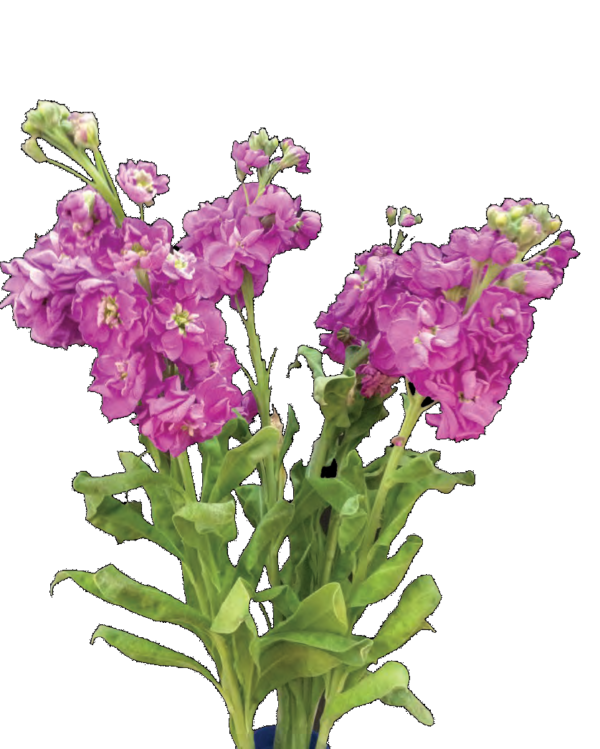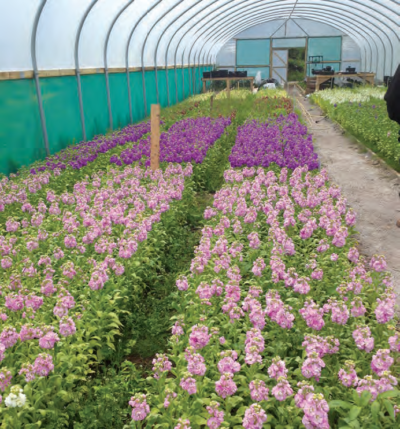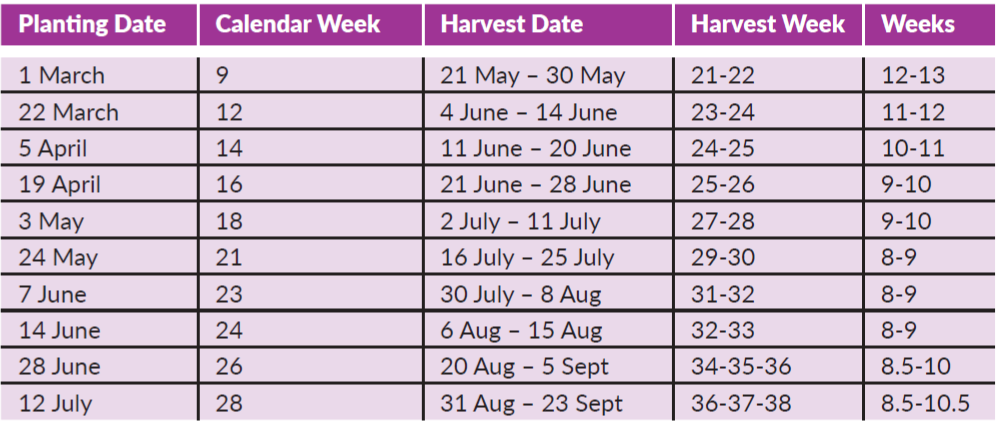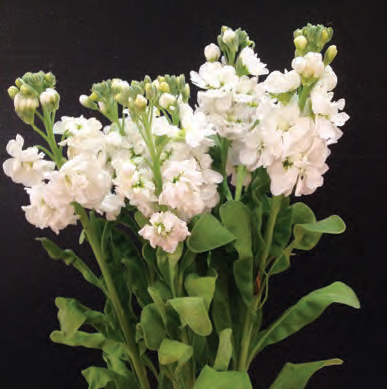Andy Whelton outlines the main actions in the production of the popular scented cut flower, Stock, following recent trial work

Scented or Column Stock (Matthiola incana) is a member of the cabbage family (Brassicaceae) and native to the Canary Islands and parts of southern Europe (Mediterranean). Given the interest from retailers and florists for Irish cut flowers, Teagasc Horticultural Development Department carried out trials in an unheated protected structure to determine suitability for production.
SITE AND FACILITIES
In its native habitat, Stock is hardy and grows in full sun on free-draining, slightly alkaline soils. A side ventilated polytunnel in a free draining mineral loam soil of pH 6 was used for our trial. A glasshouse would be equally suitable. Overhead irrigation or ground level trickle tape irrigation is necessary for aiding establishment after planting and during the vegetative growth phase of the crop. A layer of wire support to keep the stems straight, circulation fans and cold storage facility for post-harvest storage are also important.
Soil sterilisation prior to planting is recommended to ensure freedom from weeds and soil pathogens. A soil analysis should also be taken prior to planting to determine precise nutrition requirements – base dressings of Nitrogen (N) as Calcium Ammonium Nitrogen can be applied at up to 8 kg/100m2. Crops can be given extra feeding in the form of top dressing or liquid feeding as necessary.
The crop is generally grown on the flat where a 1m wire mesh (12.5cm x 12.5cm) is rolled out over the bed and stakes-placed at 2.5m-3m intervals. The stakes and wire mesh support the crop as it grows.
Stock can be grown at 70-80plants/m2. Ensure transplants are not planted too deeply and water well in to ensure good contact with the soil.
RANGE OF COLOURS
Stock varieties for the cut flower market have been bred to produce double flowers along the flower stem or ‘column’ in a range of colours. The ones used in the trials were: Aida – White; Carmen – Yellow; Figaro – Lavender; Figaro – Rose Light – Pink and Opera Francesca – Rouge. Module plants were purchased from specialist Dutch plant raiser: Florensis BV.
“ Experience suggests that a net return of €6/m2 is achievable from the crop with a supply of regular volume over at least 15 weeks.“

CROP CONTINUITY
To ensure continuous cropping, it is important to understand crop scheduling techniques. Production time of Stock crops will vary depending on planting dates and weather conditions. Warm weather will reduce crop production time, however, hot weather can induce flowering before plant stems have reached the required length. Under normal growing conditions, crop production will take 8-13 weeks depending on planting date (see table). Each crop will flower for 1 to 2.5 weeks allowing three or four separate croppings ‘picks’ until all marketable stems are harvested.
The ideal growing temperature for Stock is 15C to 24C during the day and 7C to 13C during the night. The difference between day and night temperatures is important to produce the required stem length. The Teagasc experience suggests that a mid-May harvest is possible from an early March planting in a polytunnel. A glasshouse facility is required if you require flowers earlier in May. Experience suggests that cropping until late September /early October is possible in a tunnel with sequential plantings during the late spring/early summer.

PESTS AND DISEASE THREATS

Aphids, caterpillars and slugs should be monitored for and action is taken if necessary. Downy Mildew and Botrytis may cause problems and a spray programme will have to be implemented. Fusarium is the other major disease threat which can become an issue over time with heavy cropping. It is a soil-borne pathogen that prefers warm conditions, ideally 23C to 25C. It can result in significant losses with the crop wilting and dying and is the subject of research in the UK at the moment.
STAGE OF HARVEST
The stems are ready to harvest when four or five flowers have opened. They should be 55cm to 65cm in length. Earlier harvesting will reduce shelf life. The most commonly used harvest technique is to pull stems including the plant roots. Stems are then bunched (normally five per bunch) with lower leaves and roots trimmed off. The stems are sleeved and placed into buckets of water.
As Stock produces one flowering stem per plant, it is expected that 50 to 60 stems/m2 will be harvested depending on planting density and the occurrence of disease. Taking 10% waste, experience suggests that a net return of €6/m2 is achievable from the crop with a supply of regular volume over at least 15 weeks. The species can be double-cropped during high season. ✽
 ANDY WHELTON, a specialist in ornamental cut foliage crops in the Teagasc Horticultural Development Unit, continues his series of articles on the agronomy and screening work on innovative novel plant material being trialled for use in the floristry trade at Kildalton Agriculture and Horticultural College, Pilltown for use in the floristry trade. Contact Andy Whelton: andy.whelton@teagasc.ie ANDY WHELTON, a specialist in ornamental cut foliage crops in the Teagasc Horticultural Development Unit, continues his series of articles on the agronomy and screening work on innovative novel plant material being trialled for use in the floristry trade at Kildalton Agriculture and Horticultural College, Pilltown for use in the floristry trade. Contact Andy Whelton: andy.whelton@teagasc.ie |






